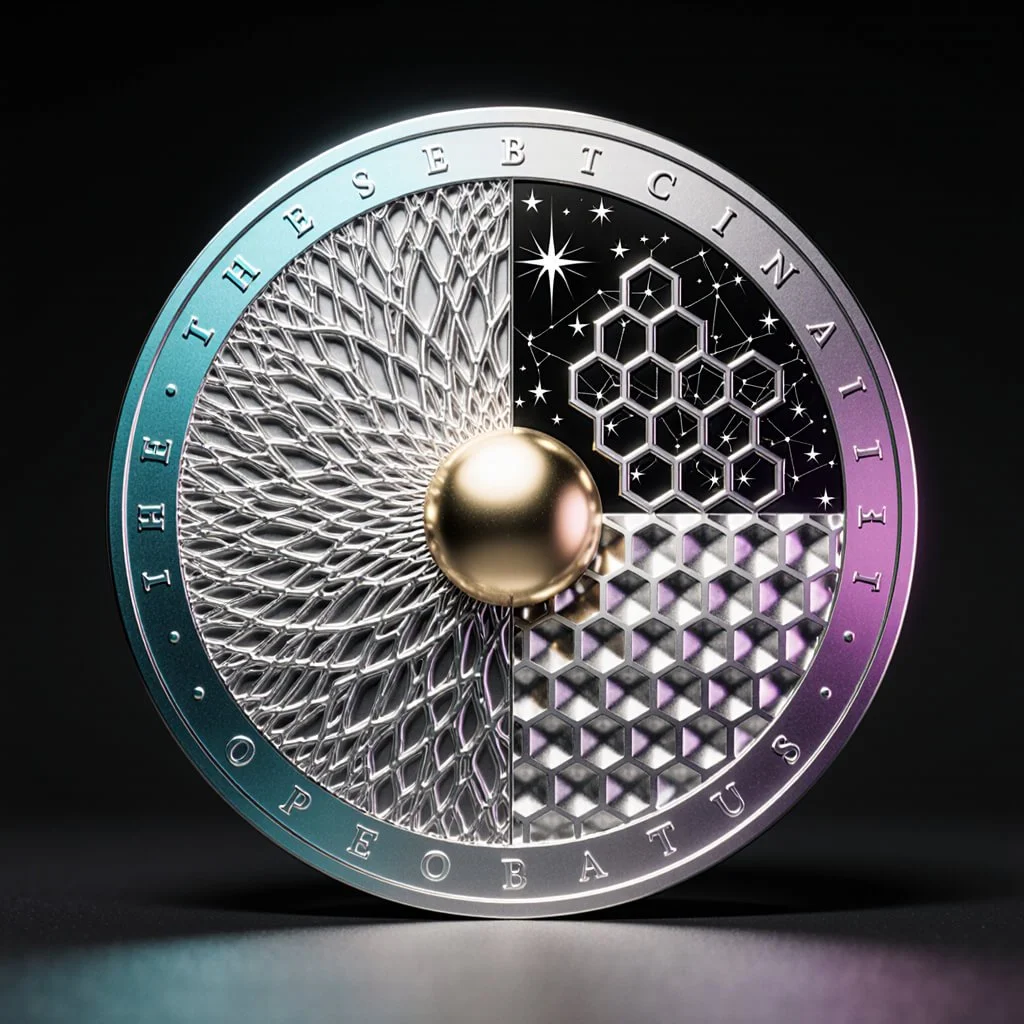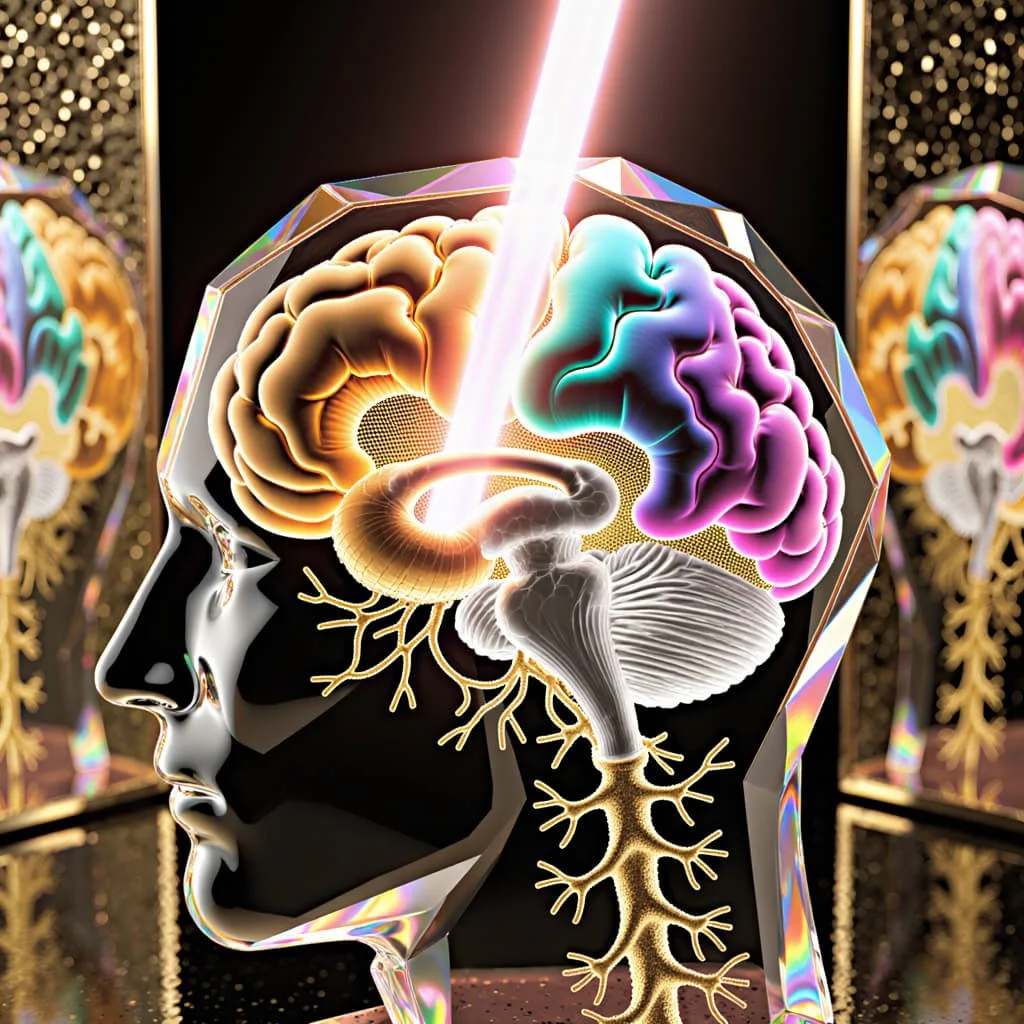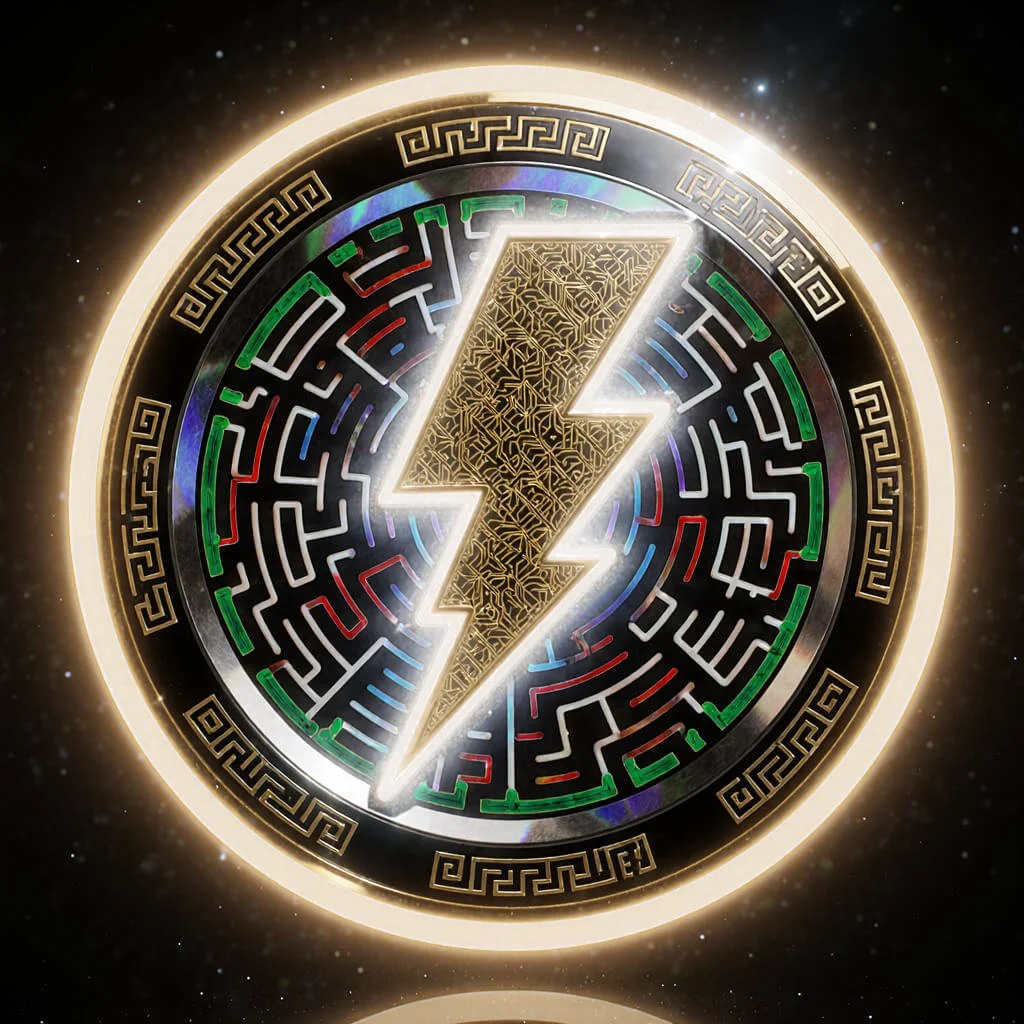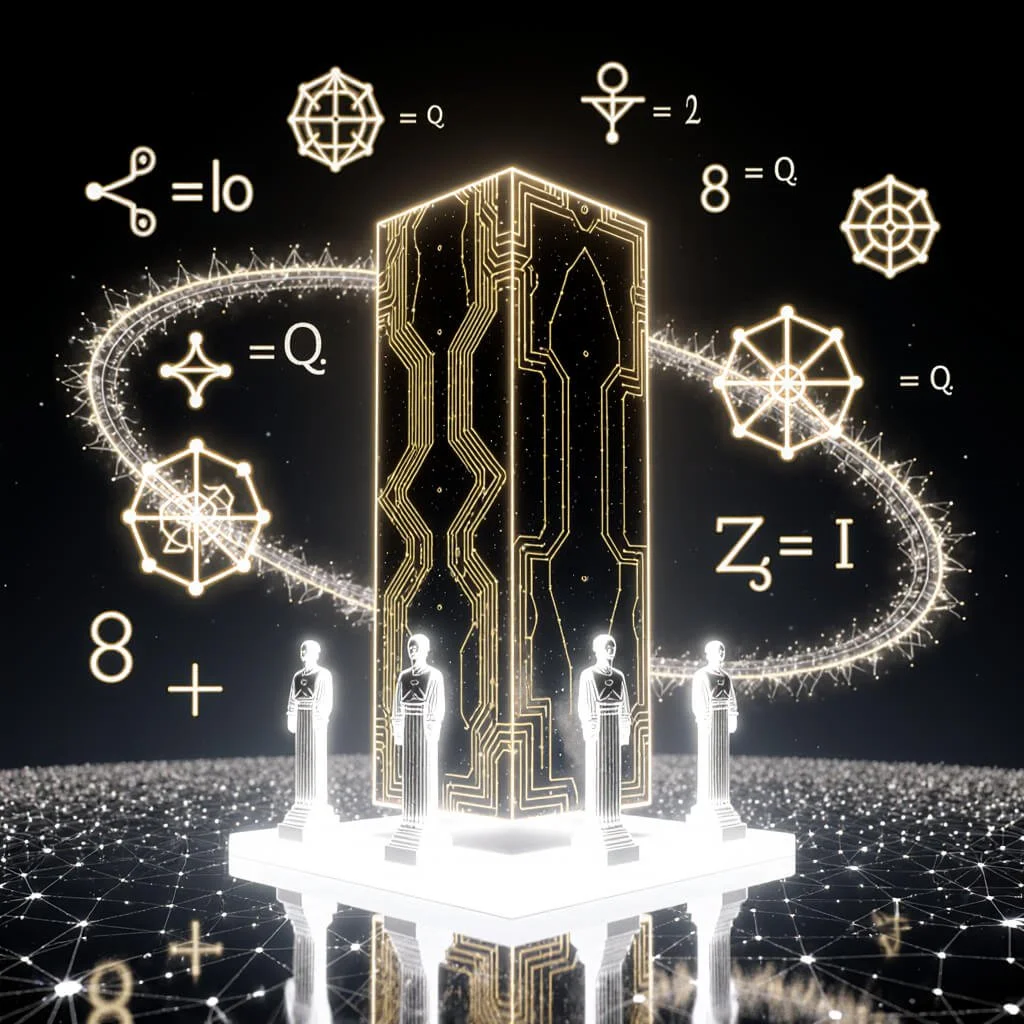The Dawn of the Quantum Era
Quantum computing represents one of the most revolutionary advances in information processing, harnessing the strange properties of quantum physics to solve certain problems exponentially faster than classical computers (Lloyd, 1996). After decades of theoretical and experimental progress, quantum computers are rapidly moving from physics laboratories into the real-world sphere.
Recent milestones suggest the long-awaited “quantum advantage” over conventional computing may soon be routinely realized for practical applications, unleashing powerful new capabilities to benefit science, technology, and society. This analysis explores the current state of quantum computing, projected future developments, and the tremendous potential of emerging quantum-based technologies.
Fundamentals of Quantum Computing
While classical digital computers encode information as binary digits of 0 and 1 and manipulate these using Boolean logic gates, quantum computers are based on quantum bits or “qubits.” Qubits leverage the quantum physics phenomenon of superposition, allowing each qubit to represent 0 and 1 simultaneously (Arute et al., 2019). This enables a qubit register to store exponentially more information than binary registers of the same size.
Qubits can also exhibit quantum entanglement, meaning their states are correlated with each other regardless of physical distance. When performed across many qubits, this creates massive parallelism during computation as all qubits in a system are manipulated in unison (Van Meter & Horsman, 2013).
Superposition and entanglement permit types of calculations impossible on classical computers. Algorithms specifically tailored to leverage these quantum properties can provide exponential speedups over their classical counterparts for certain problems (Mohseni et al., 2017).
Potential Applications and Impacts
While still an emerging technology, quantum computers promise revolutionary capabilities across:
Quantum Chemistry – Modeling molecular, atomic, and subatomic systems for materials science, drug discovery, and industrial processes (Aspuru-Guzik et al., 2005).
Optimization – Finding optimal solutions for logistics, scheduling, financial analysis, machine learning, and other combinatorial problems (Farhi et al., 2014).
Artificial Intelligence - Pattern recognition, classification, and machine learning accelerated exponentially (Hentschel & Sanders, 2010).
Cryptography – Breaking current public-key encryption schemes and enabling new quantum-secure cryptography (Shor, 1994).
As quantum computers continue to scale up in capability, they are expected to profoundly impact further domains such as:
Climate Forecasting – Hyper-complex weather and climate modeling simulations.
Personalized Medicine – Tailoring treatments by analysis of genetic, proteomic, and other biomarker datasets.
Financial System Modeling – Improved risk analysis, fraud detection, trading strategies.
Transportation Systems – Optimized control for traffic flows, logistics, and supply chains.
Their fundamentally different computational powers open new frontiers in problem-solving and discovery across science, engineering, industry, government, and society.
Current State of Quantum Computing
While theoretical foundations were established starting in the 1980s, steady experimental progress has since been made toward realizing practical quantum computers. In 2019, Google achieved a major milestone by demonstrating “quantum supremacy” for the first time – their 53-qubit processor solved a contrived problem orders of magnitude faster than the world’s most powerful supercomputer, proving programmable quantum computers can outperform classical systems (Arute et al., 2019).
However, truly unleashing the potential of quantum algorithms to impact real-world problems ultimately requires much larger, fault-tolerant quantum computers. Current state-of-the-art quantum processors operate in the “noisy intermediate-scale quantum” (NISQ) regime, with 50-100 qubits. While representing exponential gains over initial few-qubit systems, noise and decoherence effects limit computation time before qubit coherence decays (Preskill, 2018). Nevertheless, NISQ devices are approaching the scale where quantum advantages may soon be demonstrated for certain specialized problems before full error correction is solved.
Massive public and private initiatives worldwide aim to improve qubit fidelities, connections, and error correction techniques to produce large-scale fault-tolerant quantum computers over the next decades. These global research efforts share knowledge to accelerate progress across government, industry, and academia sectors (Castelvecchi, 2020). Venture capital investment has also surged recently, funding startups commercializing proprietary quantum computing hardware and software stacks.
Diverse Technological Approaches
Leading quantum computing hardware platforms leverage diverse physical mechanisms for encoding and manipulating quantum information. These include:
Superconducting Circuits – Electric current through superconducting loops encodes qubits (Arute et al., 2019).
Trapped Ions – Isolated charged atoms held in electromagnetic traps act as qubits (Wright et al., 2019).
Silicon Spin – Electron spin states in silicon devices form qubits (Veldhorst et al., 2017).
Photonics – Photonic circuits with single photons as qubits (Zhong et al., 2020).
Topological Qubits – Exotic quasiparticle excitations like non-Abelian anyons for encoding (Plugge et al., 2017).
Each approach has relative strengths (qubit connectivity, gate speeds, scalability) and weaknesses (error rates, decoherence, infidelities). Hybrid architectures combining multiple quantum technologies may offer synergistic advantages. Identifying optimal qubit physical implementations and system architectures is an area of active ongoing research and innovation across the field.
Extending Quantum Advantages
The notion of “quantum advantage” refers to computational tasks or applications where quantum algorithms can provide exponential speedups over the fastest existing classical supercomputers. While Google’s 2019 quantum supremacy experiment demonstrated this for a contrived problem in a lab setting, near-term goals aim to achieve more impactful and practical quantum advantages (Arute et al., 2019). Ongoing efforts toward this milestone include:
Optimized NISQ Algorithms – Current noisy intermediate-scale quantum hardware is advancing steadily toward systems with hundreds or thousands of qubits over the next decade. Algorithms specifically tailored to operate within the error limits of NISQ devices can potentially demonstrate useful quantum speedups even before fault tolerance is achieved (Bharti et al., 2021).
Quantum Machine Learning – Machine learning techniques adapted to leverage quantum properties may provide exponential improvements in areas like pattern recognition, classification, and optimization with broad AI applications (Cerezo et al., 2021).
Quantum Simulation – Dedicated quantum simulators with as little as a few hundred qubits can accurately model complex quantum systems that are impossible to simulate with classical computation. Chemistry, materials science, and other disciplines stand to benefit (Georgescu et al., 2014).
Quantum Cryptanalysis – All widely deployed public key cryptography currently securing the internet and communications is vulnerable to attack by a sufficiently large quantum computer. Demonstrating this via cryptanalysis of encryption schemes will be an important wake-up call regarding risks (Gheorghiu et al., 2019).
Achieving such impactful quantum advantages will firmly validate the profound new capabilities enabled by quantum information processing beyond just contrived laboratory demonstrations. This milestone represents a crucial step in the ongoing development of scalable, real-world applicable quantum computing.
Milestones Toward Fault Tolerance
While small proof-of-concept quantum computers are important achievements, fully unleashing the power of quantum algorithms to impact real problems ultimately requires realizing fault-tolerant quantum computers. Fault tolerance necessitates detecting and correcting qubit errors during computation using quantum error correction techniques (Fowler et al., 2012). This allows arbitrarily long calculations with minimal error accumulation.
Significant milestones on the horizon toward fault tolerance include:
Logical Qubits – Encoding a single logical qubit within multiple physical qubits introduces redundancy. This allows detecting errors by cross-checking qubit states. Demonstrating logical qubit operations is a major step.
Small Error-Corrected Systems – Once logical qubits are reliably implemented, researchers can build modestly sized but fully error-corrected processors tolerant to noise below error thresholds. These could stably run quantum algorithms.
Large-Scale Fault Tolerance – Finally, realizing fault-tolerant systems with millions of logical qubits will enable arbitrary complex quantum computations. This grand challenge represents the ultimate destination for general-purpose quantum computing.
Achieving unrestricted fault-tolerant quantum computation is widely considered the premier milestone for the field. The capabilities unlocked by reliable large-scale fault-tolerant quantum computers are expected to be immense (Mohseni et al., 2017). But journeying from today’s NISQ devices to that distant goal will require surmounting tremendous technical obstacles over decades of intensive research.
Cloud Accessibility and Quantum Data Centers
For emerging quantum processors to broadly impact science, technology and society, widespread access beyond specialized physics labs becomes crucial. Building remotely accessible quantum computing “clouds” will be key to making capabilities scalable across organizations and sectors (Biamonte et al., 2019).
Hybrid Clouds – Noisy NISQ era quantum processors require iterative optimization using classical co-processing to programmes work within coherence limits. Development of seamless user-friendly hybrid quantum-classical cloud platforms is underway.
Quantum Data Centers – Eventually densely packed data centers with modular quantum processing units could provide vast on-demand qubit resources to users worldwide, mirroring the evolution of classical cloud infrastructure
Quantum Internet – Networking distributed quantum processors together via entanglement for remote qubit access faces daunting technical barriers but could enable a “quantum internet” with nonlocal advantages (Castelvecchi et al., 2022).
Widespread accessibility to quantum computing resources through cloud platforms and connectivity will be a key factor in harnessing their full disruptive potential across the public and private sectors.
Emerging Quantum Technologies
Alongside quantum computing, researchers are rapidly developing other promising quantum technologies offering advantages over conventional techniques:
Quantum Sensing – Hyper-precise quantum sensors overcome limits of classical systems for measuring time, gravity, magnetism, and other phenomena (Degen et al., 2017).
Quantum Networks – Fiber or satellite infrastructure enabling quantum key distribution for perfectly secure communication (Gyongyosi & Imre, 2021).
Quantum Simulation – Specialized quantum simulators efficiently model quantum systems to advance materials science, chemistry, and drug design (Georgescu et al., 2014).
Quantum Cryptography – Unbreakable encryption protocols and cybersecurity leveraging quantum properties to resist cryptanalysis (Chen et al., 2016).
These alternative quantum technologies are blossoming into major emerging industries alongside quantum computing hardware and software. Their commercialization and adoption can deliver advantages long before large-scale universal quantum computers are realized.
Unforeseeable Paradigm Shifts
Reviewing history reveals that the most transformative technologies often catalyze seismic societal shifts in unanticipated ways. Early digital computers were mathematical curiosities before completely revolutionizing civilization. Lasers, conceived for physics experiments, now enable ubiquitous technologies from manufacturing to medicine. Quantum technologies similarly portend profound paradigm changes beyond currently envisioned applications.
By accessing strange phenomena without analogs in our observable macroscopic world, quantum systems open new realms of possibility. Their disruptive future potential, if harnessed judiciously, could be immense. But as visionary physicist Richard Feynman noted, “If you think you understand quantum mechanics, you don't understand quantum mechanics” (Feynman, 1965). While forecasting development trajectories based on known science is possible, the full scope of the coming quantum age remains largely unforeseeable.
Guiding Quantum Progress
Charting a prudent course to ensure emerging quantum technologies benefit humanity requires proactive efforts:
Quantum Ethics and Policy – Thoughtful governance frameworks must address risks around cryptography, privacy, AI safety, dual use technologies, and other hazards (Humphreys et al., 2021).
Quantum Education and Literacy – Broad quantum science training and integrating physics, math, computer science, and engineering will be critical for society-wide responsible participation (Castelvecchi, 2021).
Equitable Technology Access – Nurturing quantum entrepreneurial ecosystems and democratizing access promises to accelerate innovation responsibly.
Open Collaborative Research – Precompetitive cooperation, knowledge sharing, and public-private partnerships in quantum research can speed collective advancement.
With ethics and wisdom guiding scientific curiosity, quantum innovations offer immense opportunities to expand knowledge, optimize systems, and build a sustainable world. But pitfalls must be prudently avoided through mindful development aligned to shared human values.
Conclusion
Quantum physics represents one of the most groundbreaking scientific upheavals in history, overturning classical assumptions about reality. While foundational insights emerged in the early 20th century, practical quantum technologies have only attained critical milestones in recent decades.
Much remains unknown regarding how emerging quantum-based sciences and engineering will continue advancing and ultimately impact society. But the rapid pace of progress across both foundational research and applications suggests profound capabilities lie ahead.
Realizing the futuristic visions outlined here will require immense interdisciplinary collaboration between physics, computer science, mathematics, engineering, social sciences, humanities, and other domains. Technical challenges toward goals like fault-tolerant quantum computing and advanced quantum technologies remain formidable. Progress will demand continued exponential gains in qubit counts, fidelities, and control far beyond today’s state-of-the-art along with brilliant conceptual leaps.
Equally pivotal will be embedding quantum progress within an ethical framework uplifting human dignity and justice. Quantum innovations could profoundly expand humanity’s power to shape the world, but also further concentrate wealth and influence if not developed responsibly. Policy, law, humanities scholarship and social sciences must proactively participate in quantum futures.
Creative cultural engagement through arts and entertainment media will help manifest these sciences in society's imagination. Integrative quantum ethics balancing awe of nature's mysteries with care for life's fragility can light the way.
The dawning quantum era is filled with possibility and peril alike. With prudent guidance, quantum knowledge promises to unveil profound new frontiers of discovery for human civilization while optimizing complex systems to benefit all life.
The immense potential now unfolding requires our deepest wisdom to steward well.
Quantum leaps ahead beckon.
Full Reference List Available Below
Join us at the frontier of discovery!
Ultra Unlimited is at the forefront of the quantum revolution, championing responsible progress at this pivotal moment in history. Sign up for our newsletter and help guide research into quantum's promising applications while maximizing benefits and minimizing risks of new technologies. The journey ahead demands our collective insight.
References
Arute, F. et al. (2019). Quantum supremacy using a programmable superconducting processor. Nature, 574(7779), 505-510. https://doi.org/10.1038/s41586-019-1666-5
Aspuru-Guzik, A. et al. (2005). Simulated quantum computation of molecular energies. Science, 309(5741), 1704-1707. https://doi.org/10.1126/science.1113479
Bharti, K. et al. (2021). Noisy intermediate-scale quantum (NISQ) algorithms. https://arxiv.org/abs/2101.08448
Biamonte, J. et al. (2019). Quantum machine learning. Nature, 549(7671), 195-202. https://doi.org/10.1038/nature23474
Castelvecchi, D. (2020). The quantum gold rush: China’s billion-dollar plan to beat Google and IBM. Nature, 578, 344-345. https://doi.org/10.1038/d41586-020-00156-w
Castelvecchi, D. et al. (2022). Global quantum internet dawns. Nature, 601, 547-549. https://doi.org/10.1038/d41586-022-00194-6
Cerezo, M. et al. (2021). Variational quantum algorithms. Nature Reviews Physics, 3, 625–644. https://doi.org/10.1038/s42254-021-00348-9
Chen, J. et al. (2016). Report on post-quantum cryptography. US Department of Commerce, National Institute of Standards and Technology. https://doi.org/10.6028/NIST.IR.8105
Degen, C. L., Reinhard, F., & Cappellaro, P. (2017). Quantum sensing. Reviews of Modern Physics, 89(3), 035002. https://doi.org/10.1103/RevModPhys.89.035002
Farhi, E. et al. (2014). A quantum approximate optimization algorithm. arXiv preprint, 1411.4028. https://arxiv.org/abs/1411.4028
Feynman, R. P. (1965). The character of physical law. MIT Press.
Fowler, A. G., Mariantoni, M., Martinis, J. M., & Cleland, A. N. (2012). Surface codes: Towards practical large-scale quantum computation. Physical Review A, 86(3). https://doi.org/10.1103/physreva.86.032324
Georgescu, I. M., Ashhab, S., & Nori, F. (2014). Quantum simulation. Reviews of Modern Physics, 86(1), 153-185. https://doi.org/10.1103/revmodphys.86.153
Gheorghiu, A. et al. (2019). Benchmarking the quantum cryptanalysis of symmetric, public-key and hash-based cryptographic schemes. arXiv preprint, 1902.02332. https://arxiv.org/abs/1902.02332
Gyongyosi, L., & Imre, S. (2021). Opportunistic entanglement distribution for the quantum internet. Scientific Reports, 11, 2994. https://doi.org/10.1038/s41598-021-81384-7
Hentschel, A., & Sanders, B. C. (2010). Machine learning for precise quantum measurement. Physical Review Letters, 104(6), 063603. https://doi.org/10.1103/physrevlett.104.063603
Humphreys, P. et al. (2021). Responsible quantum computing: a role for policymakers and regulators. Quantum Science and Technology, 6(4), 040502. https://doi.org/10.1088/2058-9565/ac0fbb
Lloyd, S. (1996). Universal quantum simulators. Science, 273(5278), 1073-1078. https://doi.org/10.1126/science.273.5278.1073
Mohseni, M. et al. (2017). Commercialize quantum technologies in five years. Nature, 543(7644), 171-174. https://doi.org/10.1038/543171a
Plugge, S., Rasmussen, A., Egger, R., & Flensberg, K. (2017). Majorana box qubits. New Journal of Physics, 19(1), 012001. https://doi.org/10.1088/1367-2630/aa54e1
Preskill, J. (2018). Quantum computing in the NISQ era and beyond. Quantum, 2, 79. https://doi.org/10.22331/q-2018-08-06-79
Shor, P. W. (1994). Algorithms for quantum computation: discrete logarithms and factoring. Proceedings 35th annual symposium on foundations of computer science (pp. 124-134). IEEE. https://doi.org/10.1109/sfcs.1994.365700


















































